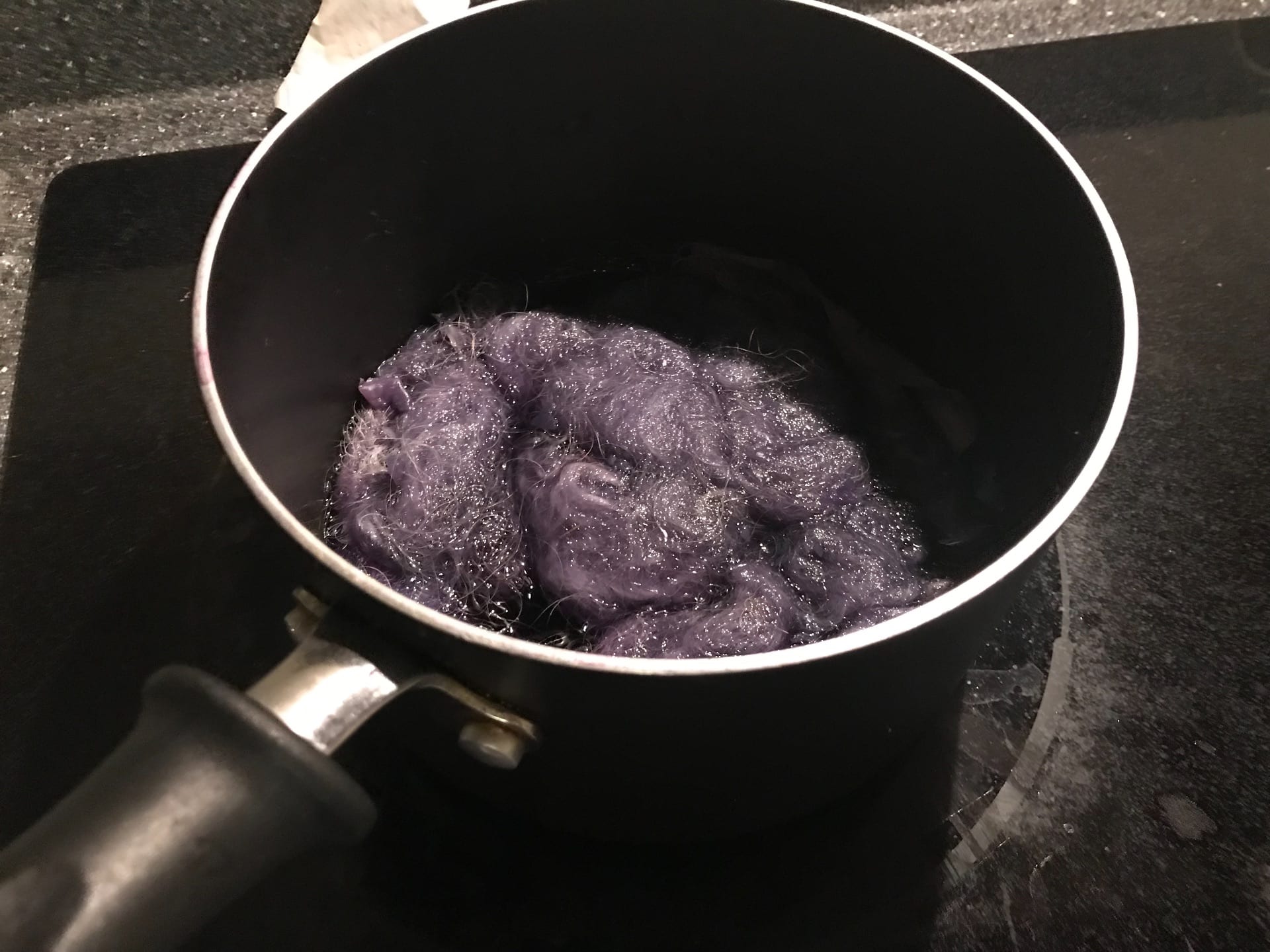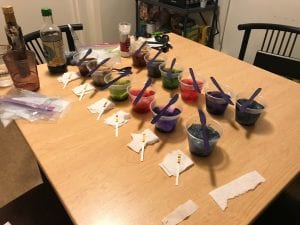- For my natural dye process experiment, I chose to work with red cabbage. Although I wasn’t able to find out exactly where the red cabbage was grown when at the market I got it from, research suggests that most red cabbage produced in the United States is grown in eastern North Carolina. If this is the case of the specific red cabbage I purchased, It would mean that it travelled approximately 510 miles to get to the store (from North Carolina to New York).
- When it came to dyeing the wool, I noticed that the unwashed (oily) sample of wool didn’t pick up quite as much dye as the clean samples did, making it appear a bit faded.
- The cotton samples came out slighter more vibrant and with even coloration throughout, whereas the wool samples were lighter and somewhat patchy. This has to do with the way the different fibers absorb dye.
- I believe that natural dyes wouldn’t work as well on synthetic fibers (such as polyester) as they would on natural fibers (such a cotton and wool) since they’re not as absorbent and porous – to be dyed, I’m sure synthetic fibers would need some sort of pre-treatment.
- Considering that this was my first attempt at natural dyeing, I was pleased with my results overall, but I recognize that it would be best if I tried this process several more times to get the hang of it.
- To do this natural dye experiment, there was alum, tartaric acid, soda ash, iron, soy sauce, leftover cabbage, small amounts of wool fibers, and small amounts of soap left in the water before disposing of it down the drain.
- Although I would never recommend that people put the specific type of waste that I disposed of down the drain, I recognize that it wasn’t as harmful as industrial quantities of natural dyes or synthetic dyes being flushed down the drain. Regardless, I don’t believe any type of harmful waste should be going down drains like it does. Despite this I’m not entirely sure of how we’d dispose of these things otherwise.
- To reduce the pressure of clean water necessary for drinking and bathing when it comes to fashion and home décor designs and the tons of fibers that these industries dye each year, they could either invest money into finding out which dyeing process is the least harmful to both society and the environment or come up with great filtration systems to put their waste through.
- I personally plan on utilizing the natural dye process in the future when working on projects seeing as how pleased I was with the variation of different earth tones (and other colors) I could achieve in my own home. I think natural dyes are uncommon in industries that generally work with dyes given that dyeing things synthetically probably takes less time and produces results that are more vibrant. Although I don’t believe natural dyeing is safer for the environment (given that it has the potential to leave behind a decent amount of harmful waste), I would say it’s probably better than synthetically dyeing things.







